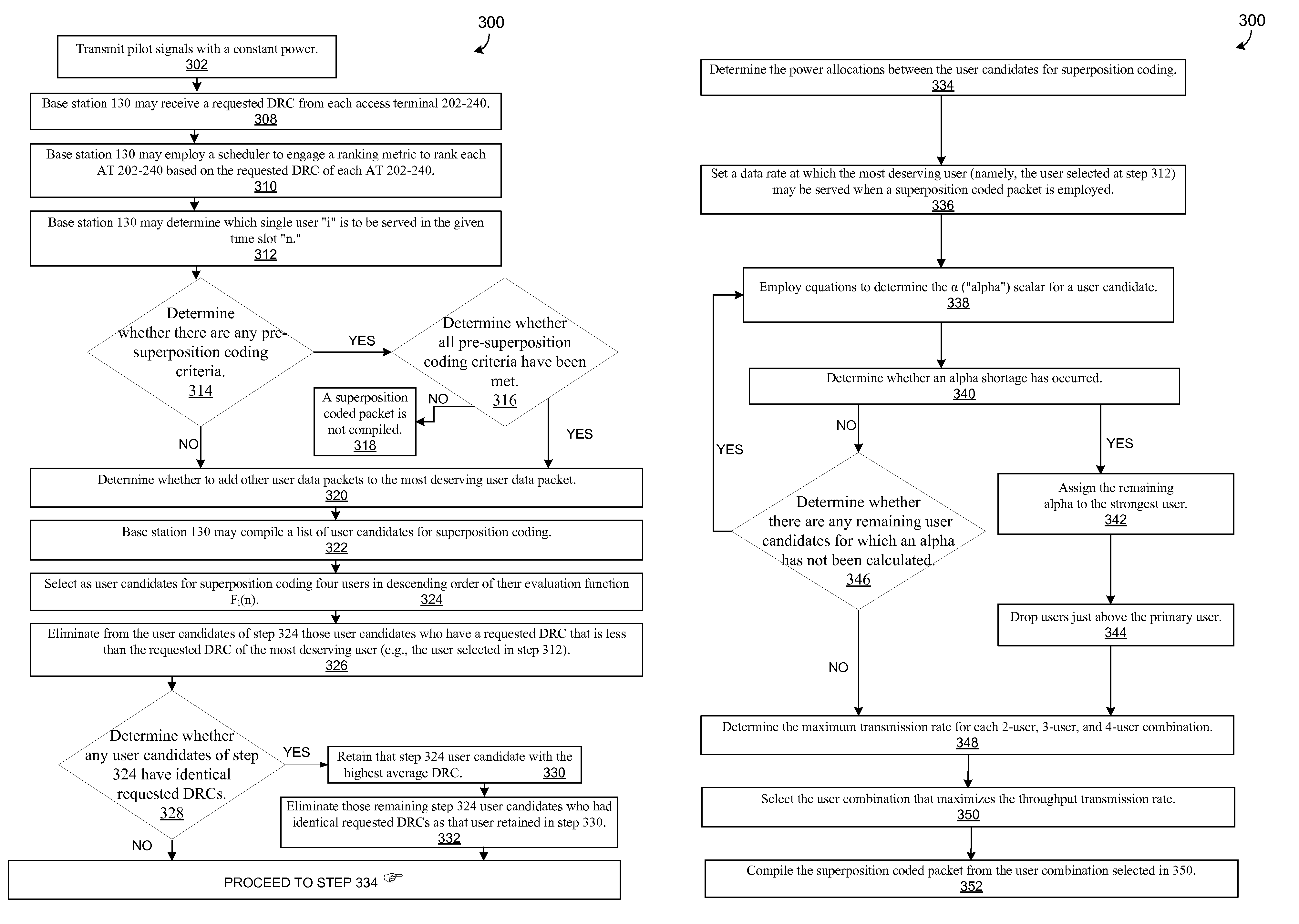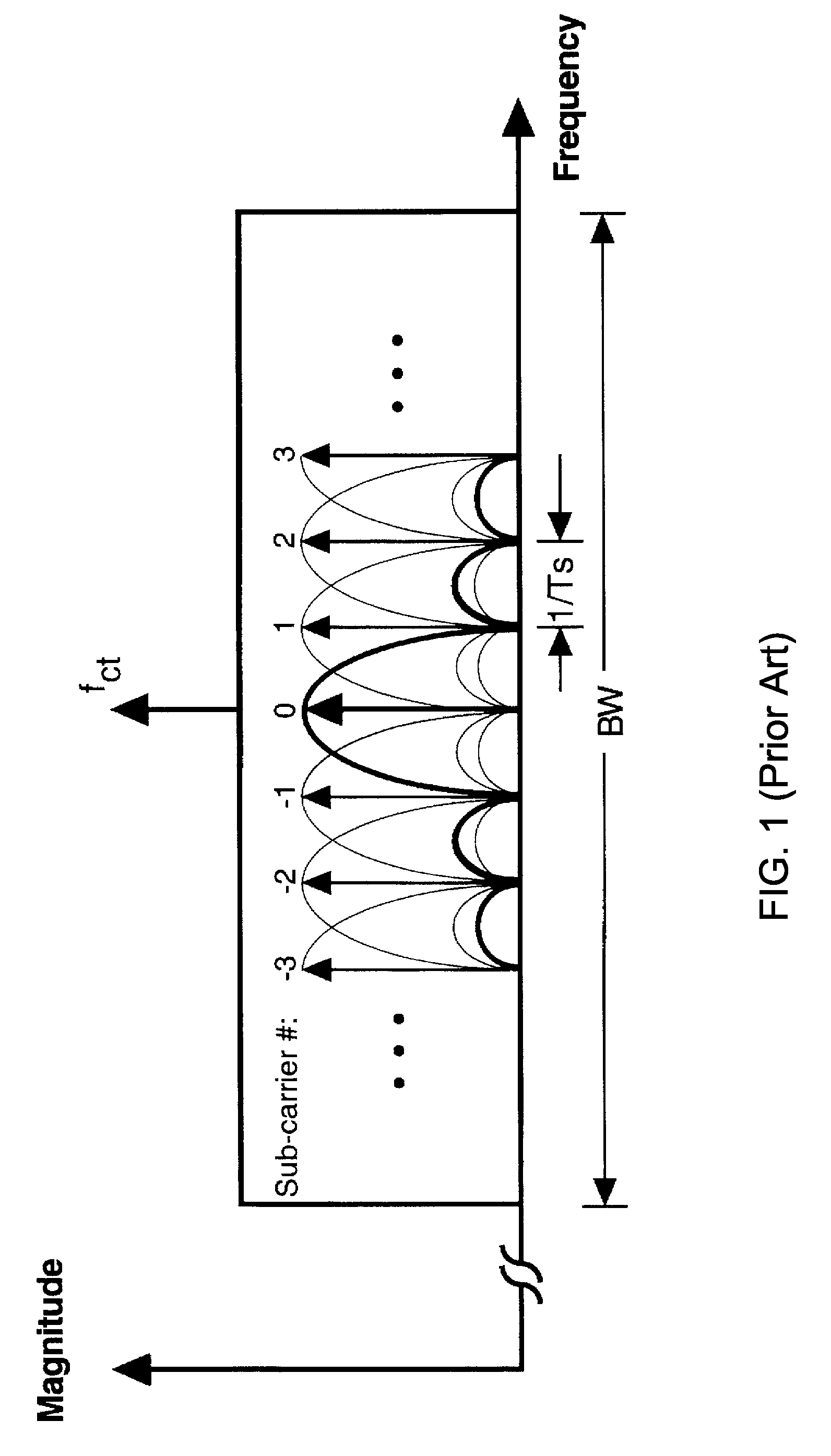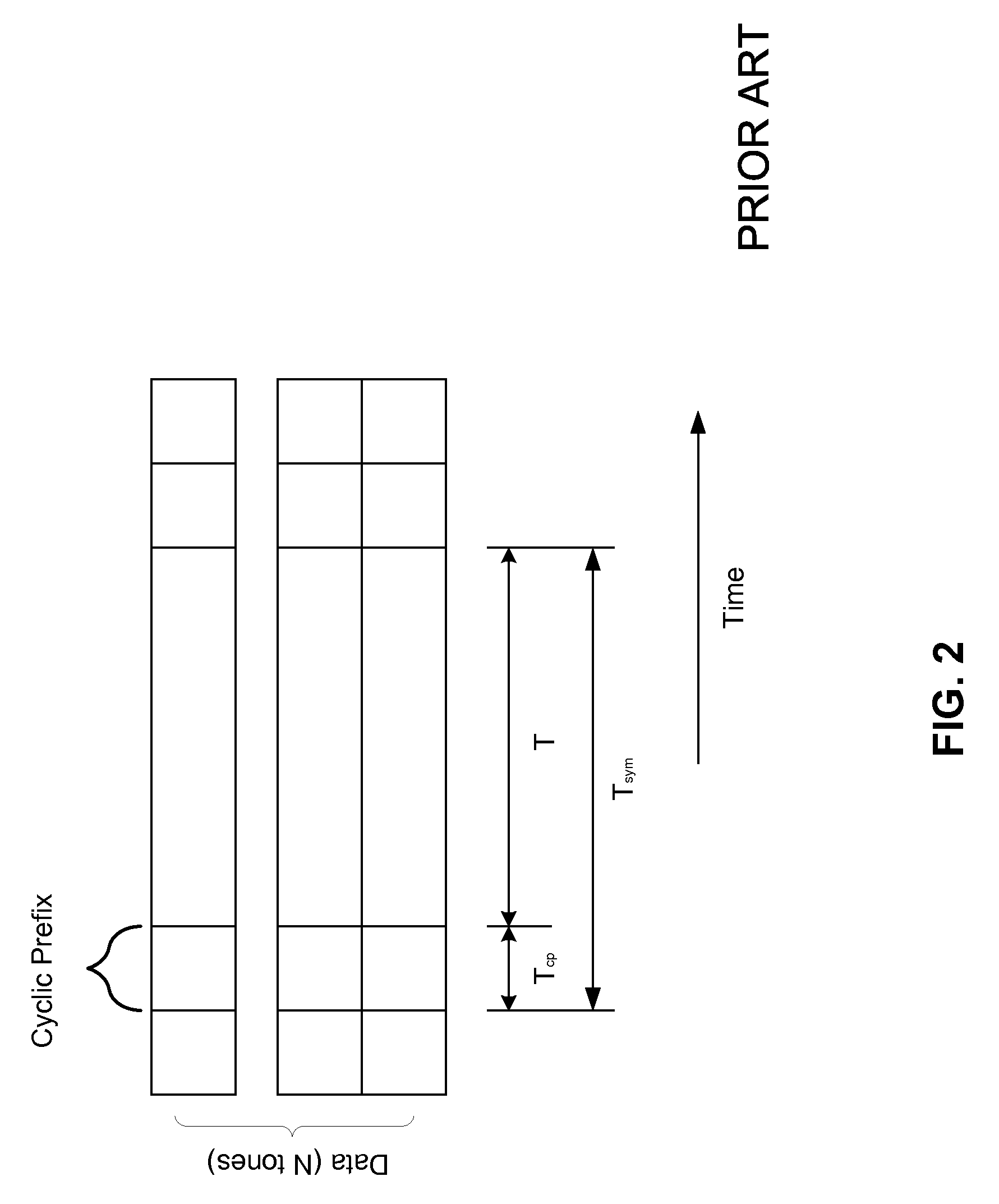Superposition coding in a wireless communication system
a wireless communication system and superposition coding technology, applied in the field of superposition coding and wireless communication system superposition coding, can solve the problems of affecting the requested drc of each phone, limiting the overall system data throughput performance, and penalizing users with lower fl sinrs with a lower than potential throughput, so as to reduce transmission delays and improve the number of users. , the effect of reducing the number of users
- Summary
- Abstract
- Description
- Claims
- Application Information
AI Technical Summary
Benefits of technology
Problems solved by technology
Method used
Image
Examples
Embodiment Construction
[0037]Millions of people in the United States and around the world utilize cellular phones. One of the most interesting things about a cell phone is that it is actually a sophisticated radio. To provide communication, these sophisticated radios may be incorporated into a radiotelephone system such as a cellular system.
[0038]In a cellular system, a geographic area such as a city may be divided into a number of cells. Each cell may have a base station that includes a tower and a small building containing radio equipment. The base station within a cell may service the communication link needs of the cell phones located within that cell.
[0039]The communication link needs of a cell phone may be broken into two areas: reverse link (cell phone to base station link) and forward link (base station to cell phone link). During forward link operations, a base station may transmit data packets to the cell phones located within that cell. For example, at any one moment in time (e.g., during 1.67 ...
PUM
 Login to View More
Login to View More Abstract
Description
Claims
Application Information
 Login to View More
Login to View More - R&D
- Intellectual Property
- Life Sciences
- Materials
- Tech Scout
- Unparalleled Data Quality
- Higher Quality Content
- 60% Fewer Hallucinations
Browse by: Latest US Patents, China's latest patents, Technical Efficacy Thesaurus, Application Domain, Technology Topic, Popular Technical Reports.
© 2025 PatSnap. All rights reserved.Legal|Privacy policy|Modern Slavery Act Transparency Statement|Sitemap|About US| Contact US: help@patsnap.com



